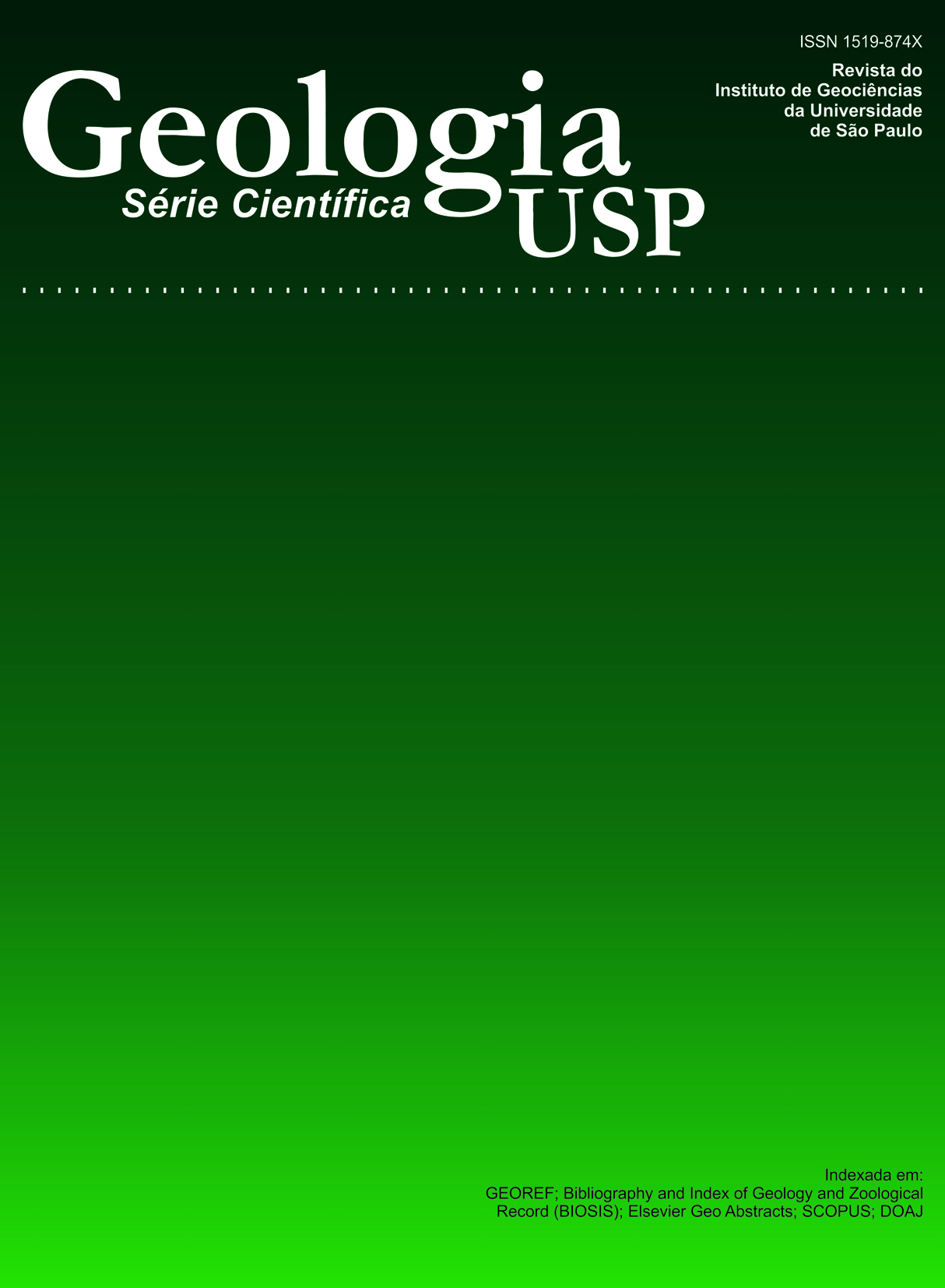Combined electric, electromagnetic and gamma spectrometric methods applied to the Pariquera-Açu alkaline complex
DOI:
https://doi.org/10.5327/Z1519-874X2011000200005Keywords:
Gamma Spectrometry, Electric methods, Electromagnetic methodsAbstract
The Pariquera-Açu Alkaline Complex, located in the city of Pariquera-Açu (State of São Paulo), is one of the Brazilian alkaline complexes which has considerable mining potential. The combined use of several methods helped to determine possible areas for exploration. Geophysical prospecting methods were used to assess the exploration potential of these areas. The methods used in this study were gamma-spectrometry, induced polarization and electrical survey. Previous geophysical studies were carried out to better understand the structural evolution of the complex and were not limited to the study of the lithological variation. Gravimetric studies showed a zone of intense fenitization, which is consistent with alkaline complexes with carbonatites. A dipole-dipole survey conducted in the central part of the complex indicated the presence in the subsurface of a resistive lithology with high chargeability. These factors, together with other studies on the alkaline complex, suggest the presence of carbonatite in the area, which is corroborated by gamma spectrometry data, given the concentrations of Th (8 ppm) and U (3.5 ppm) and considering that the measurements were performed over a non-radioactive sedimentary cover.Downloads
Download data is not yet available.
Downloads
Published
2011-08-01
Issue
Section
Articles
License
Authors who publish in this journal shall comply with the following terms:
- Authors keep their copyright and grant to Geologia USP: Série Científica the right of first publication, with the paper under the Creative Commons BY-NC-SA license (summary of the license: https://creativecommons.org/licenses/by-nc-sa/4.0 | full text of the license: https://creativecommons.org/licenses/by-nc-sa/4.0/legalcode) that allows the non-commercial sharing of the paper and granting the proper copyrights of the first publication in this journal.
- Authors are authorized to take additional contracts separately, for non-exclusive distribution of the version of the paper published in this journal (publish in institutional repository or as a book chapter), granting the proper copyrights of first publication in this journal.
- Authors are allowed and encouraged to publish and distribute their paper online (in institutional repositories or their personal page) at any point before or during the editorial process, since this can generate productive changes as well as increase the impact and citation of the published paper (See The effect of Open Access and downloads on citation impact).
How to Cite
Loureiro, E. M. L., Rugenski, A., & Mantovani, M. S. M. (2011). Combined electric, electromagnetic and gamma spectrometric methods applied to the Pariquera-Açu alkaline complex . Geologia USP. Série Científica, 11(2), 89-99. https://doi.org/10.5327/Z1519-874X2011000200005





